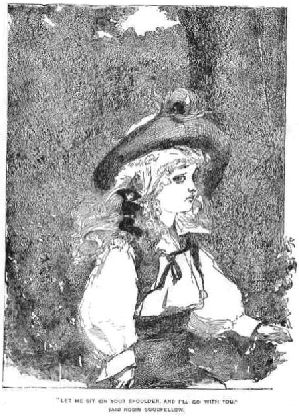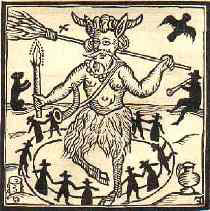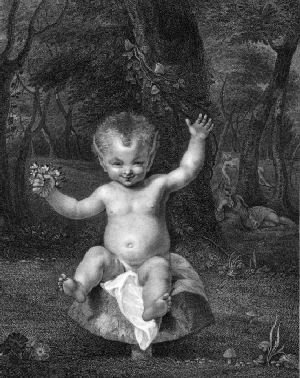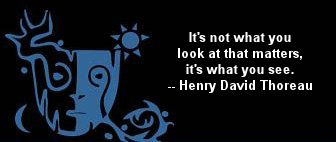|

Merry Robin: The Native British Trickster
Copyright © 2006 John Matthews
and used with permission of the author
 John Matthews, a presenter at Mythic Journeys 2004 and 2006, is the author of numerous books primarily about the Arthurian, Celtic, shamanic and spiritual traditions. His well known works include The Celtic Shaman, Healing the Wounded King, and The Winter Solstice. Watch for The Trick of the Tale: Trickster Stories from Around the World by John Matthews and his wife Caitlín, due out in 2007 from Templar Publishing.
John Matthews, a presenter at Mythic Journeys 2004 and 2006, is the author of numerous books primarily about the Arthurian, Celtic, shamanic and spiritual traditions. His well known works include The Celtic Shaman, Healing the Wounded King, and The Winter Solstice. Watch for The Trick of the Tale: Trickster Stories from Around the World by John Matthews and his wife Caitlín, due out in 2007 from Templar Publishing.
Robin Goodfellow is the archetypal prankster and trickster of Britain. Almost everything we know about him comes from a curious 17th century pamphlet which rejoices in the title Robin Goodfellow, alias Puck, alias Hob: his mad pranks, and merry jests, full of honest mirth, and is a fit medicine for melancholy. It was printed in 1628 but almost certainly drew on a whole range of earlier faery lore, as well as lore concerning Robin Hood and the Green Man. The story contained in the pamphlet may be summarised as follows:
Robin's nascence is described in a manner very reminiscent of the birth of Merlin. Oberon, the Faery King, visits a maiden at night, but in the day vanishes 'wither she knew not, he went so suddenly.' As with Merlin's mother, the outcome of these nightly visits is a child, who shows no unusual traits until, aged six, he began to be so troublesome and to play such knavish tricks upon the neighbours, that his mother was in despair. Finally she promised him a whipping, and since this did not please him, he ran away. A day from his home he settled to sleep in a field, and there dreamed of bright-eyed folk who danced around him all night to music he deemed as fair as Orpheus might have made. In the morning he woke to find a scroll beside him on which was written, in words of gold:
 "Robin, my only son and heir,
"Robin, my only son and heir,
How to live take thou no care:
By nature thou hast cunning shifts,
Which I'll increase with other gifts.
Wish what thou wilt, thou shall it have;
And for to fetch both fool and knave,
Thou hast the power to change thy shape,
To horse, to hog, to dog, to ape.
Transformed thus, by any means,
See none thou harm'st but knaves and queans:
But love thou those that honest be,
And help them in necessity.
Do thus and all the world shall know
The pranks of Robin Goodfellow,
For by that name thou called shall be
To age's last posterity;
And if thou keep my just command,
One day thou shall see Fairy Land."
Robin at once tested the promise of wish-granting by asking for food; a dish of fine veal was set before him. He wished for plum pudding: it appeared. Then, being weary, he wished himself to be a horse. At once he became a fine spirited beast, and thereafter changed himself into a black dog, a green tree and so on, until he was sure he could change himself into anything he wished. Then he wished to try out his new found skills by playing more of the tricks for which he had been recently chastised, and forthwith he set forth into the world, where he began to play so many merry jests that soon his name was known throughout the land. He played tricks on clowns, on burgers, on old and young; he turned himself into a chimney sweep (for which reason he was a patron of sweeps until the Victorian era and appeared in procession with them in the May Day Games). Finally, so great was the noise about the world complaining of Robin Goodfellow's trickery, that his father Oberon summoned him to Faery with these words:
"Robin, my son, come quickly rise:
First stretch, then yawn, and rub your eyes:
For thou must go with me to-night,
And taste of Fairy-Land's delight".
Robin rose from his bed at once and went where he was called. Here he met with Oberon and many other fairies, all clad in green. Throughout the night they danced to faery music, and as they danced Oberon said:

"Whene'er thou hear the piper blow,
Round and round the fairies go!
And nightly you must with us dance,
In meadows where the moonbeams glance,
And make the circle, hand in hand —
That is the law of Fairy-Land!
There thou shalt see what no man knows;
While sleep the eyes of men doth close!
After this Robin is said to have remained in Fairy-Land for 'many a long year'.
The great folklorist Kathleen Briggs catalogues this Robin, together with Puck, as a type of Brownie, a hobgoblin or sprite whose characteristics were chiefly to cause trouble for mortals and to clean up houses where they were made welcome. This is generally in line with the instructions he is given in the scroll by his father, that he harm none who do not deserve it. Generally, the victims of his pranks are indeed unworthy people, and despite the anger he causes by his at times outrageous deeds, there is little or no real spite or cruelty in them. Indeed, like Robin Hood he more often helps the poor at the expense of the rich.
 Like other heroes of myth, such as Taliesin, he is able to change shape at will — not only into animal, bird and fish, but also into such things as trees, bushes, rocks and clouds. In this, and by the nature of his birth, he proclaims himself more than a simple fairy. Like Robin Hood he is a hero of the common people, with powers far greater than his pranks would suggest. Indeed, it seems that he really never grows up, but remains forever the little six-year old boy, even after he has attained his rightful place beside his father in Faery. Like the young Merlin and the youthful Taliesin he loves playing tricks that more often resolve mysteries or which display his abilities to make things happen. His characteristic 'ho,ho,ho' is reminiscent of Merlin's laughter, while his shape-shifting abilities are like those of the famous Welsh bard. Alfred Nutt, in his essay on The Fairy Mythology of Shakespeare even compared him to the Irish God Manannan mac Lir, who was also the son of a mortal and a human mother, and who eventually attained the Celtic otherworld after being watched over by his father.
Like other heroes of myth, such as Taliesin, he is able to change shape at will — not only into animal, bird and fish, but also into such things as trees, bushes, rocks and clouds. In this, and by the nature of his birth, he proclaims himself more than a simple fairy. Like Robin Hood he is a hero of the common people, with powers far greater than his pranks would suggest. Indeed, it seems that he really never grows up, but remains forever the little six-year old boy, even after he has attained his rightful place beside his father in Faery. Like the young Merlin and the youthful Taliesin he loves playing tricks that more often resolve mysteries or which display his abilities to make things happen. His characteristic 'ho,ho,ho' is reminiscent of Merlin's laughter, while his shape-shifting abilities are like those of the famous Welsh bard. Alfred Nutt, in his essay on The Fairy Mythology of Shakespeare even compared him to the Irish God Manannan mac Lir, who was also the son of a mortal and a human mother, and who eventually attained the Celtic otherworld after being watched over by his father.
There are many other descriptions of Robin Goodfellow which show that he was seen in a remarkably unified way - as witness the following extract from Thomas Rowlands' More Knaves Yet:
'Amongst the rest, was a good fellow devil,
So-called in kindness, cause he did no evil,
Known by the name of Robin (as we hear)
And that his eyes as bigge as sawcers were,
Who came a nights, and would make kitchens cleane
And in the bed bepinch a lazie queane....'
Lewis Spence, in his study of the seasonal games, argues that 'many of the Mad Pranks and Merry Gests recounted of Robin Goodfellow in the old pamphlet of that name make it clear that the goblin in question had more than a nominal connection with Robin Hood in his 'tricky' stories.' He goes on to discuss the belief in the 'great dead' or tribal ancestors, who were believed to preside over the growth of vegetation — hence, perhaps, the attribution of the colour green to the world of the dead — and with whom the faeries have a close association.
'Of such a type, I believe, was Robin Hood, or Rob, or Hob of the Wood or Forest, who presided over that particular demesne, whence both timber and venison were forthcoming... The facts that his traditional tomb was situated among a grove of trees, and that it consisted of a standing stone which was capable of self-propulsion and miraculous motion...bring him into line with those other spirits who haunt such standing stones, and who were formally worshipped at them. In a word his gravestone behaves like the traditional fairy monolith... Robin Hood I believe, then, is a reminiscence of an early departmental deity or godling associated with afforested places, and as such his festival would be celebrated at the seasons of vernal growth. That Robin Goodfellow, the Mad Hob, or wild goblin, is a later and more elfin phase of him appears more than probable.'
Whether we see Robin Goodfellow as an elf, a fairy, a hob-goblin, or an ancestral guardian of the land, we can be sure that he was at one time recognised as a far more powerful being than we can ever imagine today. Folklorist Sydney Hartland reached the same conclusion when he wrote in his book The Science of Fairy Tales:
'Do you imagine that Robin Goodfellow — a mere name to you — conveys anything like the meaning to your mind that it did to those whom the name represented a still living belief, and who had the stories about him at their fingers' ends? Or let me ask you: Why did the fairies dance on moonlight nights? Or: Have you ever thought why it is that in English literature, and in English literature alone, the fairy realm finds a place in the highest works of the imagination?'
This makes it clear that we would not be wrong in seeing Robin Goodfellow as a native British trickster figure akin to the Native American Coyote, or the West Indian Anansi.
Read more by John Matthews at
www.hallowquest.org.uk
More on "Trickster":
Return to Mythic Passages Menu
Subscribe to the Mythic Passages e-magazine
|

